Studs are typically used to hold a structure in place and give materials stability. If you are wondering about concrete walls having studs, you've come to the right place. We have researched this topic, and here's what we found.
Concrete walls do not have studs behind them. Instead, rebar is typically used to strengthen and stabilize the foundation.
In this post, we will discuss what is inside a concrete wall and if you can screw into a concrete wall. So, continue reading to know the answers to these topics.
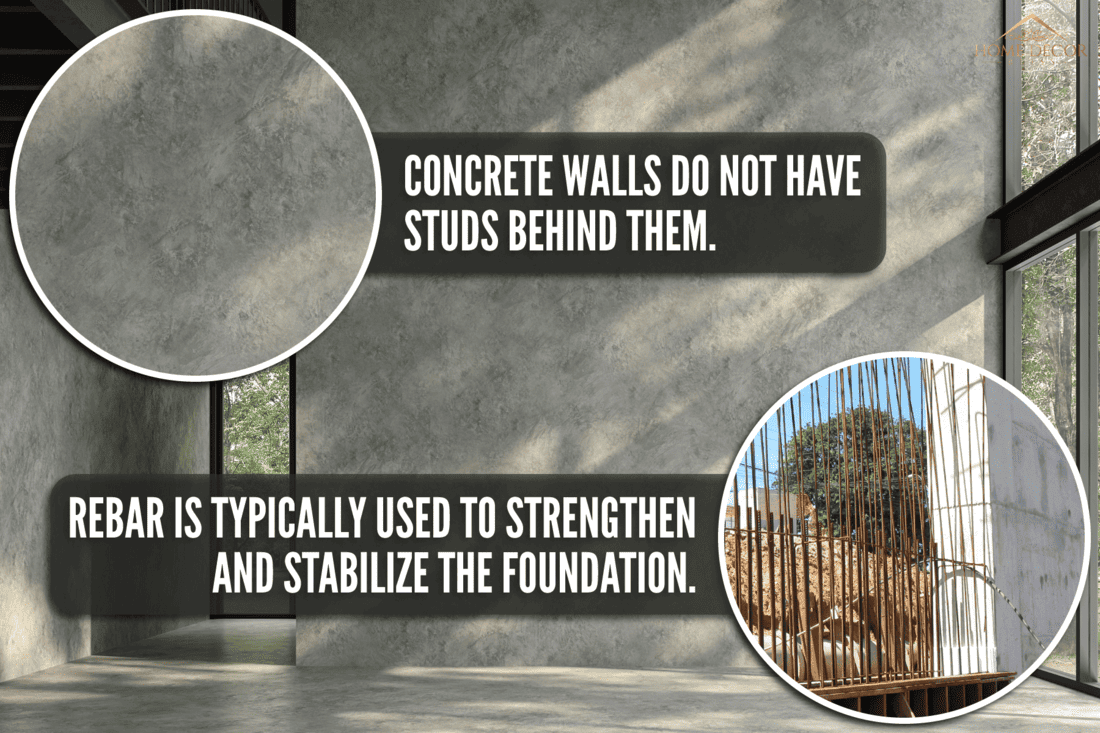
Are There Studs In A Concrete Wall?
Most home and business walls contain studs. Studs serve as the primary vertical support for your home's foundation.
The most typical kind of stud you will encounter is a wooden one. However, in the case of concrete walls, they do not need the support of studs.
Using studs behind concrete walls can weaken the framework of your house. Concrete does not hold up well when studs shift and move.
Concrete walls also benefit from not having studs because termites, mildew, and mold can infiltrate the wood. These can destroy your house's construction. Termites cannot harm concrete in any way.
If you build it on top of a concrete slab, you will need powder-actuated fasteners to anchor the wall in place.
We may include affiliate links and curated AI content to highlight top design styles.
Click here to see this powder-actuated fastener on Amazon.
To attach the powder-actuated fastener easily, you can use a caliber fastener tool.
Click here to see this caliber fastener tool on Amazon.
Concrete is simple to paint or customize and requires very little maintenance. You can layer your concrete walls with paint to have a pretty appearance or leave it bare for a more contemporary feel.
Concrete homes typically have greater temperature control and can maintain a comfortable temperature year-round.
What Is Inside A Concrete Wall?
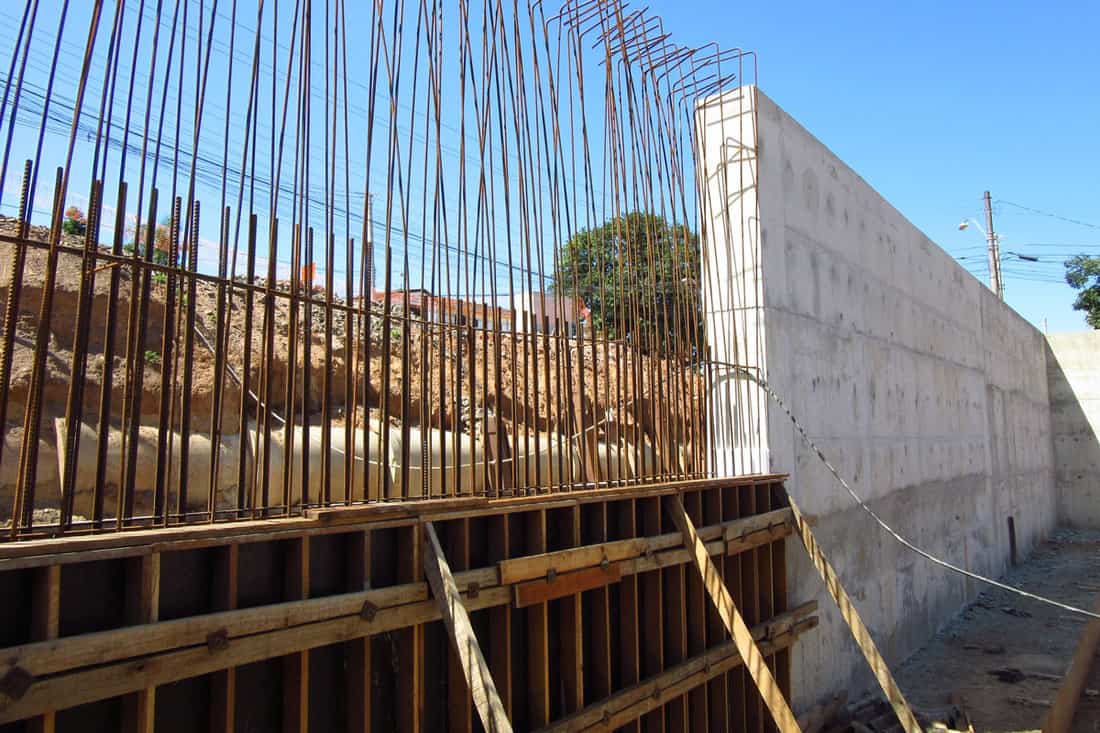
An essential step in building construction is creating concrete walls. Concrete walls are substantial, durable, and long-lasting. It is one of the materials that is known to be able to survive natural calamities like hurricanes, tornadoes, and floods.
A properly-constructed concrete wall holds up exceedingly well to all types of weather. Another advantage of a cement block wall is that it is relatively easy to build.
Concrete walls may practically consist of rebar to support the weight of their structure and can provide stability and strength. The rebar is arranged horizontally and vertically on the wall in a grid pattern.
Rebar rods can be found inside both blocks and poured concrete walls. They make doing additional work considerably more straightforward.
There are walls made of poured concrete which can be completely solid throughout. Their hollow cells are filled with concrete to reinforce the wall.
However, cracks could develop on concrete walls when the ground moves, which can provide pathways for insects and radon gases to enter. Do not attempt to repair cracks on your own. You should always call for experts to help you with this issue.
Can You Screw Into A Concrete Wall?
One of the most popular materials for walls in homes is concrete. Although concrete is sturdy, you can still drill in it.
Screws are a quick and simple way to fasten something on your concrete wall. Knowing how to drill a hole in your concrete walls is essential when using screws. Here's how you can apply screws on a concrete wall:
1. Use Safety Tools
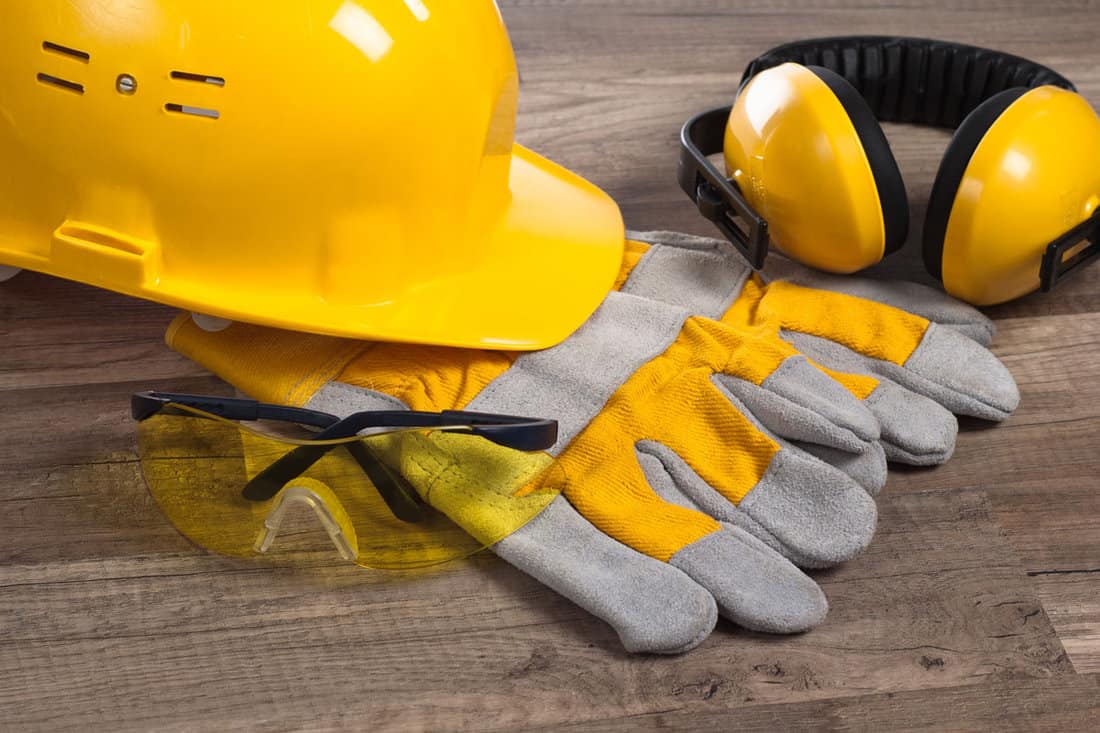
Before you perform the drilling, make sure to follow the precautions, such as wearing safety equipment. Wear gloves to protect your hands in case of an accident, and have a full grip on your electric drill.
Click here to see these Freetoo safety gloves on Amazon.
Also, wear a mask because concrete drilling emits dust.
Click here to see this disposable face mask on Amazon.
2. Examine Wires
Inspect if there are any wires present within the wall where you intend to make the hole. You may use a wire detector to check behind walls.
Click here to see this Bosch digital scanner for live wiring on Amazon.
3. Mark the Area
Mark the location on the concrete wall where you want to make a hole. You may also mark your drill bit to see where to stop during drilling.
4. Start Drilling
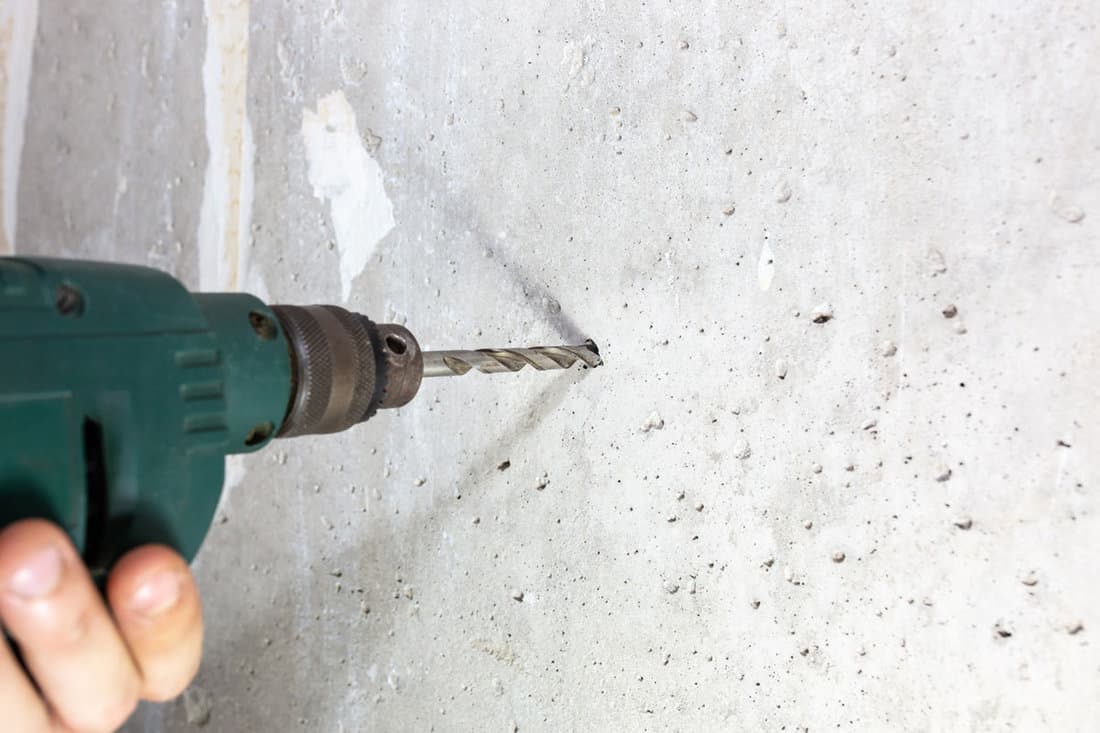
Make sure to utilize a drill bit that has the exact size of your screw. When drilling concrete, power is the most crucial consideration.
Click here to see this Enertwist drill bit set on Amazon.
Using an electric drill, slowly drill into the concrete. You may quicken your pace if you have established stability in your drill.
Click here to see this Garden Joy cordless electric drill on Amazon.
The screw will not insert if the hole is too shallow. You need to drill it at least a quarter inch deeper than the screw can go.
Be careful not to destroy the bits or burn out the drill's engine in the process. Make a stop when you feel like when there is already an excessive buildup of heat on the drill bit due to continuous drilling. If not, the drill bit could break.
5. Clean the Hole
Remove any excess debris caused by drilling. Run the bit in and out of the hole many times to clean it out. You can use a small wire brush to wipe the inside of the hole.
Click here to see this wire brush set on Amazon.
6. Insert the Anchor
Place the anchor inside the hole and tap it using a hammer to position it entirely inside.
Click here to see this anchor set on Amazon.
7. Insert Screw
Choose the right size of screw for the work you intend to complete.
Click here to see this concrete screw set on Amazon.
Using a screwdriver, fasten the screw on the wall until it tightens.
Click here to see this Amazon Basics screwdriver set on Amazon.
Does The Concrete Need A Stud Finder?
Determining where the rebar is positioned is crucial, especially if you want to drill into the concrete. If you drill straight through the rebar, you risk breaking your drill.
Stud finders are compatible with concrete, but since there typically aren't studs to locate, you shouldn't need to use one. The stud finder cannot locate rebar. You must use a rebar detector to locate them in real time. This equipment is lightweight that enables one-handed operation, making the work of finding rebar quick and easy.
A rechargeable lithium-ion battery powers it. This instrument offers substantial functionality at a reasonable cost.
How Much Weight Can A Concrete Wall Support?
Concrete can withstand exceptionally more weight than other wall materials. However, the weight that it can handle depends on how the block was constructed, its size, and its thickness. A single concrete block is known to support an average weight of at least 1,700 pounds per square inch.
How Much Weight Can You Hang On A Concrete Wall?
There are factors to consider that can affect the weight that you hang on concrete. Understanding the elements influencing a concrete wall's strength is necessary to comprehend its load-bearing capacity.
Below are the factors that can affect the weight that can concrete handles:
1. Material of Screw
Using a screw that is made of steel can handle more weight compared to one that is made of plastic.
2. Screw Size
Attaching long and larger screws to your concrete walls can support more weight compared to shorter ones.
3. Depth of Screw
It can support more weight the deeper you bury it in the wall.
4. Anchor
Steel brackets and hooks are useless if the anchor holding them to the concrete wall cannot support their weight. Choose anchors that can expand into the concrete.
In Closing
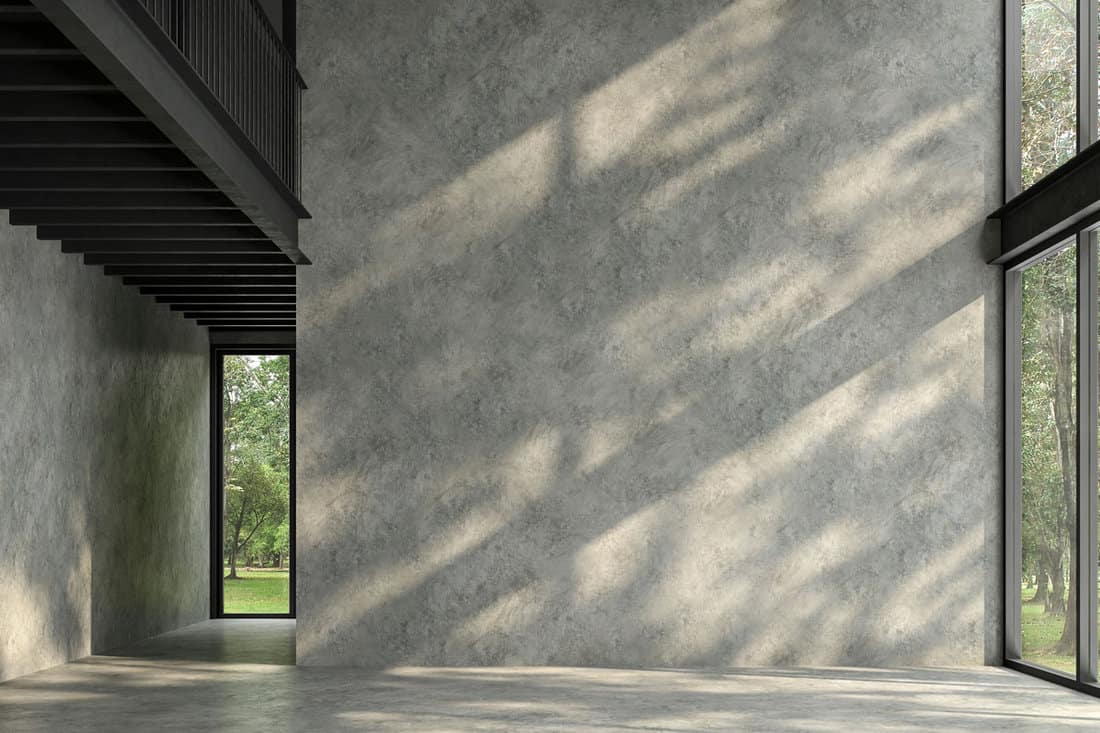
Utilizing concrete materials for your home is always an excellent option as it can withstand extreme weather conditions. You may also easily paint it if you want an aesthetic appearance.
Concrete walls do not rely on studs to support them since they are known to be robust alone. However, having the support of rebar will always be great for its structure and can strengthen it more.
We hope the information above regarding concrete walls and studs has answered your queries. Before you leave, make sure to visit these other sites for some good reads:
How To Patch a Drywall Hole Without Studs?













